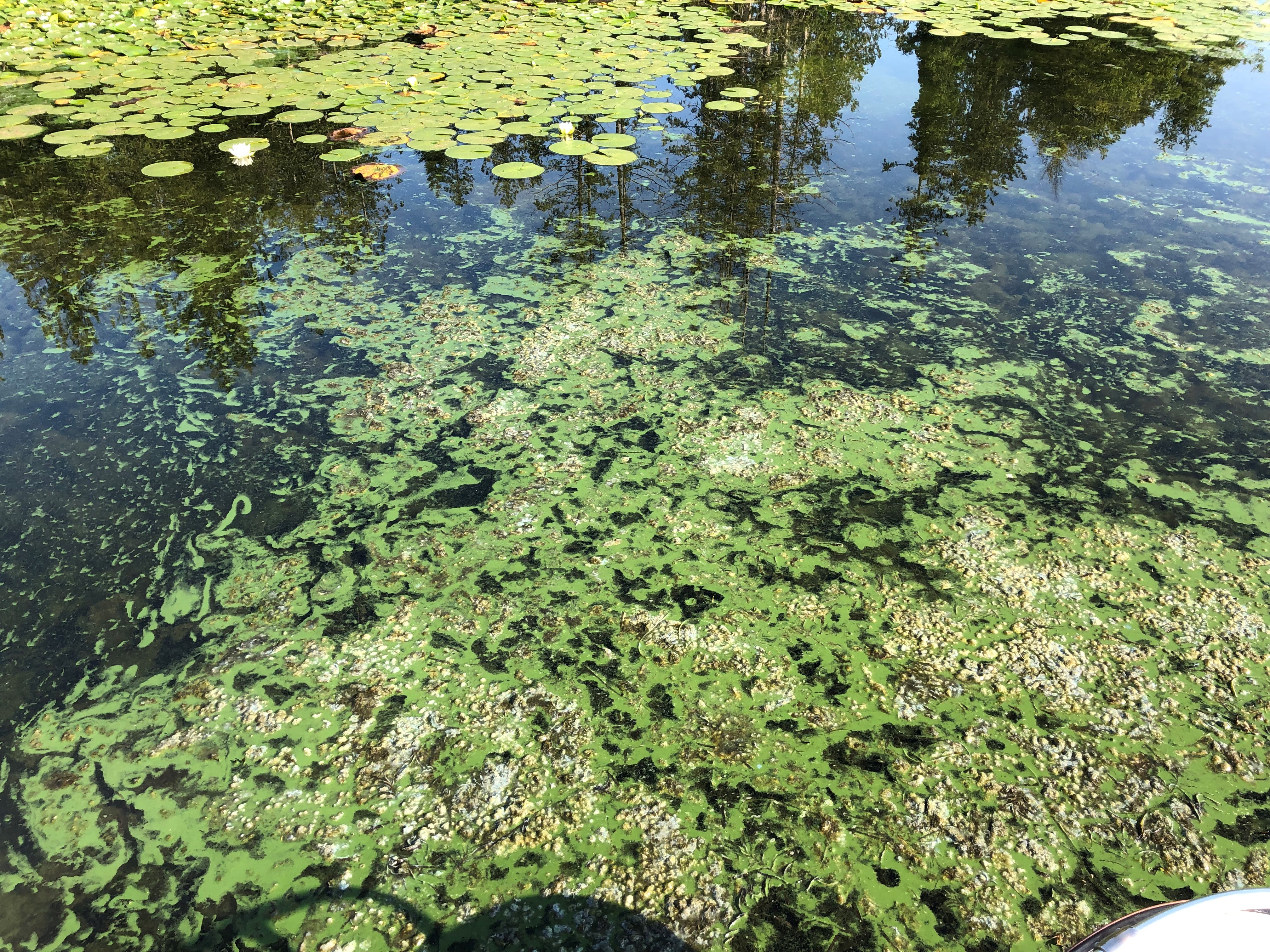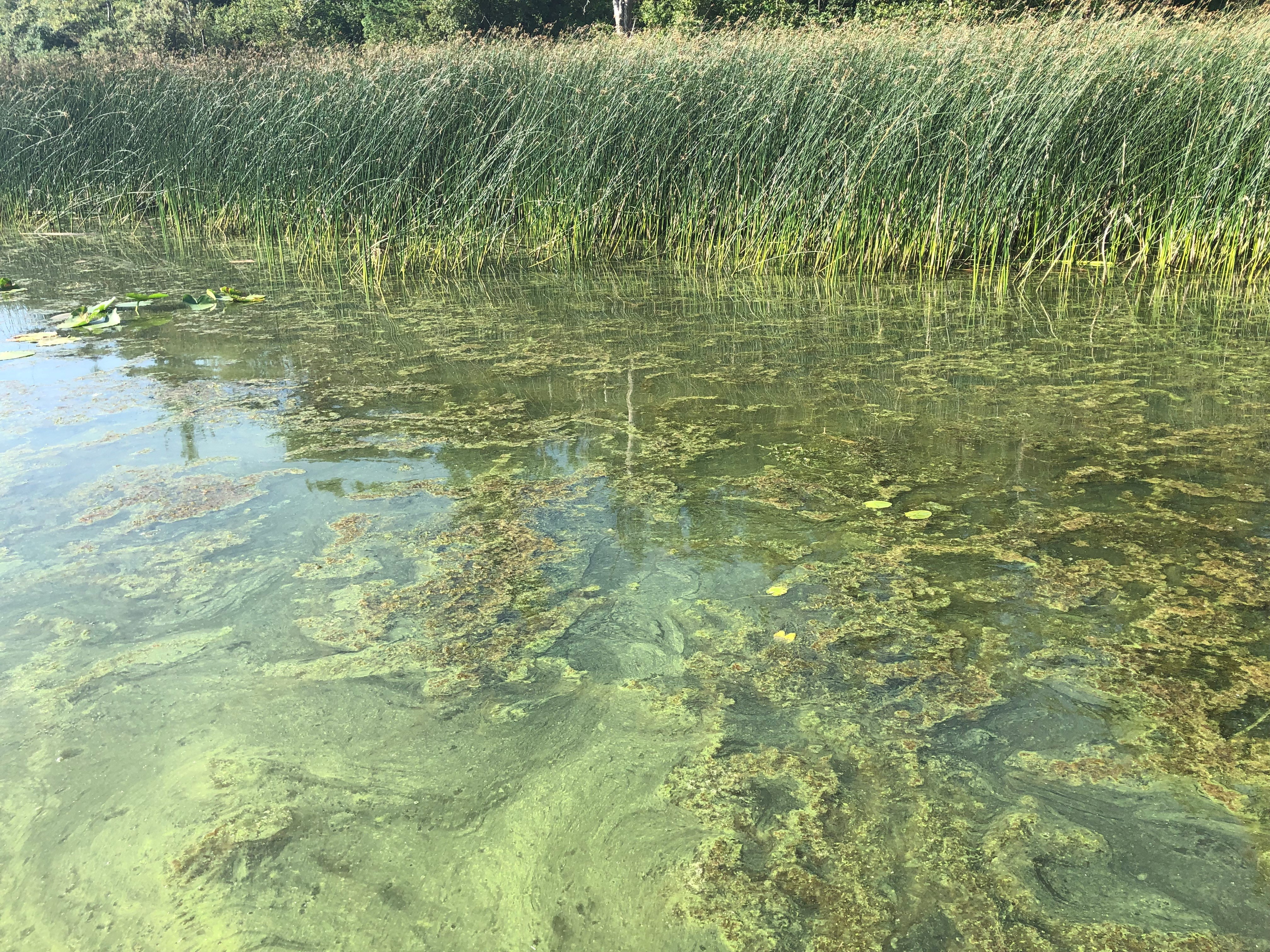
Once again, it is time to keep an eye out for harmful algae (cyanobacteria) blooms in Washington lakes. These blooms can happen every year, especially in late summer and fall months, but it’s impossible to guess how each lake will be affected due to changing climate conditions and unpredictable nutrient runoff. Some lakes get regular blooms, some lakes rarely have blooms, and not every bloom is toxic. The only way to know for sure that toxins are present in an algae bloom is through laboratory testing. When in doubt, keep yourself and your pets safe by avoiding lakes with algae blooms and pay attention to warning and closure signs.
What are harmful algae blooms?
Algae can be an essential contributor to a flourishing ecosystem, but certain lake conditions can cause algae to multiply too quickly, resulting in an algae bloom. These blooms have the potential to be toxic to humans, pets, and wildlife, which is why they are (appropriately) called harmful algae blooms.
Even though they occur every year during the summer and fall (and sometimes spring) months, harmful algae blooms are hard to predict and difficult to identify. Blooms can look different based on the Cyanobacteria species present and lake conditions. Their appearances are typically short-lived, and their toxicity levels can vary from day to day. Laboratory testing is the only way to confirm if a bloom is toxic. However, there are a few common characteristics of harmful algae blooms to keep an eye out for:
- The appearance of slimy scum, foam, or growing clumps on the water
- Algae color can vary — blue-green, reddish-brown, pea soup green
- Looks like a paint spill on the water
Additionally, be aware of these possible signs that you or your pet has been exposed to a harmful algae bloom:
- Skin rashes after being in the water
- Sudden, unexplained sickness after drinking or playing in the water
What to do around blooms
Because harmful algae blooms can only be accurately identified by lab tests, it’s best to avoid blooms when you can. If you suspect you or your pet have been exposed to a harmful algae bloom, rinse off with clean water and seek appropriate medical attention.
If you spot a bloom, contact the local lake manager. This could be the county public health department, city, or state park, depending on the lake. As there is no statewide, comprehensive monitoring program for every lake, lake managers rely on residents to call in and report blooms to their local municipality, in addition to any monitoring the lake managers perform.
Why harmful algae blooms occur
There are multiple factors that combine to create a harmful algae bloom in freshwater lakes. Generally, excess nutrients (especially phosphorus) is one of the major components, and these nutrients often come from urban and agricultural runoff. If the nutrient levels are high enough, then other factors like weather conditions and water flow changes can also trigger a bloom.
Though these factors are identifiable, the specific ways they all come together to create a bloom are still not well understood, which is what makes them hard to predict. A lake with normal levels of nutrients during springtime can still get an unexpected bloom during the summer due to nearby urban development and runoff. Similarly, a lake with high levels of nutrients can avoid a bloom if certain weather conditions are not met. There are too many elements involved in the production of a harmful algae bloom to accurately predict when and where they will occur.
How harmful algae blooms can be prevented
While the precise triggers of harmful algae blooms are hard to pinpoint, there are still steps you can take to prevent lake health from worsening and reduce a lake’s chances of developing a bloom. Keep in mind, each lake has unique circumstances and needs, so not every prevention step can be applied to every lake.
- Clean up pet waste.
- Maintain your septic system to prevent leaks.
- Do not feed water fowl, like ducks and geese.
- Reduce or eliminate the use of fertilizers.
- Wash vehicles away from the lake or storm drains.
- Maintain native vegetation around the lake.
Only time will tell if this will be a big year for algae blooms. If you want to learn more, check out these resources:


